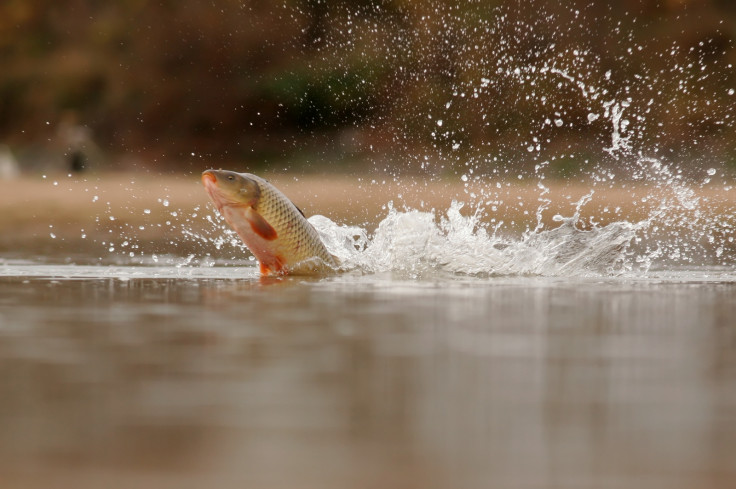Koi Herpesvirus: What is the disease that ravages UK lakes every summer?
With outbreaks common between mid-June and September, carp are once again suffering.

Every summer, numerous outbreaks of a disease known Koi Herpesvirus (KHV) are reported around the UK. In the warmer months, incidents of the disease rise and fisheries over the country are forced to implement controls to manage the possible spread of the deadly pathogen.
According to the Department for Environment, Food and Rural Affairs (DEFRA) and Centre for Environment, Fisheries and Aquaculture Science (CEFAS), nine areas in the UK have seen outbreaks so far this year; in 2015 there were 11 and 2014 saw a larger 24.
So what is this aquatic disease that ravages our lakes each summer? The disease first occurred in the UK in 2002 but was originally recorded in Koi – a more ornamental variety of common carp – in the USA. "The Koi carp had originated in Israel and been exported to the USA," head of the Fish Health Inspectorate at CEFAS, Kevin Denham, told IBTimes UK, "for a few years the disease was restricted to ornamental fish in people's garden ponds and aquaria, but over a period of time, possibly due to the fact that people were releasing pet fish into the environment, it got into our wild common carp population."
Outbreaks of the disease occur mostly during the summer months as KHV becomes prevalent when the UK's ambient water temperature reaches the 15-16 degree threshold. Denham says that the UK's window is around mid-June to September.
Under UK and EU legislation, KHV is classified as a notifiable disease – meaning that it is subject to national control measures due to its environmental impact and the fact that it is untreatable.
2016's Outbreaks
- The Barns, Cornwall
- Larford Lakes, Hereford & Worcestershire
- Brockman Fisheries, Hereford & Worcestershire
- Fleetwood Reservoir, Lancashire
- The Glebe Lakes, Leicestershire
- Bain Valley Fisheries, Lincolnshire
- Albert Park Lake, North Yorkshire
- Aston Park, South Yorkshire
- Bierley Woods Waters, West Yorkshire
KHV mainly affects the carp's gills, leaving them with lesions that then get infected with bacteria and fungi. The disease is generally fatal to infected fish, though the number of fish that die in an outbreak depends on a number of environmental factors including the density of the school and the water's temperature.
As dangerously contagious as the word herpes might make it sound, the disease only affects the common carp and its varieties like Koi. "There are no implications for humans," said Denham, "there are no implications for any mammals and no implications for any other fish species that we know about other than common carp."
Even though there are no implications for humans, it might reassure people to know that the fish affected are not those which might enter the human food chain – the outbreaks are in fisheries managed for angling purposes.
Koi Herpesvirus is a bit exceptional for CEFAS, aquatic diseases are often seasonal and temperature dependent but most of the diseases that really concern CEFAS are cold water ones, the summer is a quieter period on the fish health front. "It's just a peculiarity of aquatic animal health," says Denham.
This year the outbreaks came earlier thanks to a warmer spring but the number so far is fairly standard but with September still on the horizon, the number has a fair chance of rising.
© Copyright IBTimes 2025. All rights reserved.





















